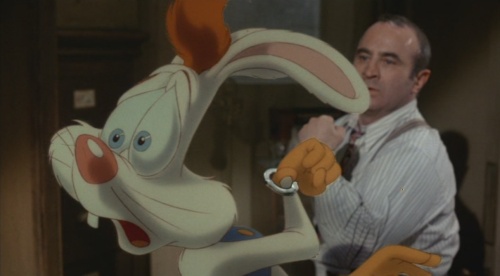
Who Framed Roger Rabbit? (Robert Zemeckis, 1988)
When people talk of the revival of animation in the 1990s, they tend to date the start of the resurgence from Disney’s 1989 feature The Little Mermaid. Certainly there is more continuity in personnel between The Little Mermaid and the 90s hits (such as Aladdin, Beauty and the Beast, and The Lion King) than there is with Who Framed Roger Rabbit. Yet I would argue that the strength of the 90s boom came from the fact that it crossed over into adult audiences: this is clearer when one looks past just the Disney films and considers the full array of animation that sprang out of this period, which includes not only the wave of excellent computer animation (Toy Story, Antz, Monsters Inc, Shrek) but also television work (“The Simpsons,” “Futurama,” “South Park,” and many others). The fact that adults were prepared to go along to these films, or watch these shows, contributed significantly to their success. Adults did so largely because appreciation of the Hollywood tradition of classical animation had bubbled through to the mainstream. People who grew up with the cartoons of the “Golden Age” of the 1930s to 1950s (a staple on TV from the 1960s onwards) were now adults who appreciated the quality of what they had seen. Who Framed Roger Rabbit, Robert Zemeckis’ elaborate tribute to Hollywood cartoons, served as a marker for this nostalgia, and hinted at the widening of the audience for animation that occurred in the 90s. Yet it still provokes mixed feelings amongst animation fans.